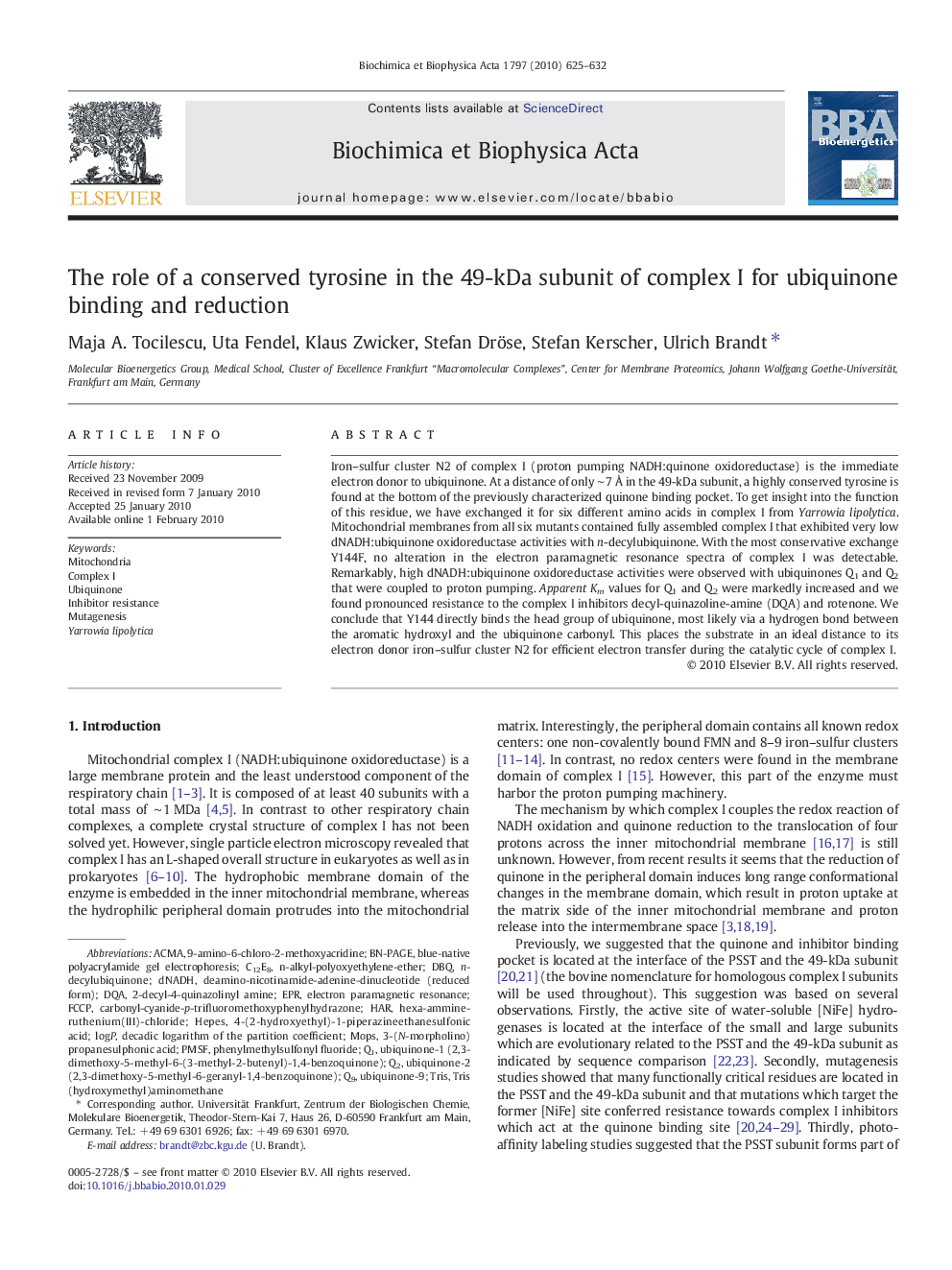| Article ID | Journal | Published Year | Pages | File Type |
|---|---|---|---|---|
| 8298857 | Biochimica et Biophysica Acta (BBA) - Bioenergetics | 2010 | 8 Pages |
Abstract
Iron-sulfur cluster N2 of complex I (proton pumping NADH:quinone oxidoreductase) is the immediate electron donor to ubiquinone. At a distance of only â¼Â 7 Ã
in the 49-kDa subunit, a highly conserved tyrosine is found at the bottom of the previously characterized quinone binding pocket. To get insight into the function of this residue, we have exchanged it for six different amino acids in complex I from Yarrowia lipolytica. Mitochondrial membranes from all six mutants contained fully assembled complex I that exhibited very low dNADH:ubiquinone oxidoreductase activities with n-decylubiquinone. With the most conservative exchange Y144F, no alteration in the electron paramagnetic resonance spectra of complex I was detectable. Remarkably, high dNADH:ubiquinone oxidoreductase activities were observed with ubiquinones Q1 and Q2 that were coupled to proton pumping. Apparent Km values for Q1 and Q2 were markedly increased and we found pronounced resistance to the complex I inhibitors decyl-quinazoline-amine (DQA) and rotenone. We conclude that Y144 directly binds the head group of ubiquinone, most likely via a hydrogen bond between the aromatic hydroxyl and the ubiquinone carbonyl. This places the substrate in an ideal distance to its electron donor iron-sulfur cluster N2 for efficient electron transfer during the catalytic cycle of complex I.
Keywords
AcmAHEPESubiquinoneDQADBQYarrowia lipolytican-decylubiquinonePMSFFCCPlogPBN-PAGEC12E8MOPSTRIS4-(2-hydroxyethyl)-1-piperazineethanesulfonic acid9-amino-6-chloro-2-methoxyacridineblue-native polyacrylamide gel electrophoresisHARTris(hydroxymethyl)aminomethaneElectron paramagnetic resonanceEPRdNADHphenylmethylsulfonyl fluorideComplex IMutagenesisMitochondria
Related Topics
Life Sciences
Agricultural and Biological Sciences
Plant Science
Authors
Maja A. Tocilescu, Uta Fendel, Klaus Zwicker, Stefan Dröse, Stefan Kerscher, Ulrich Brandt,
